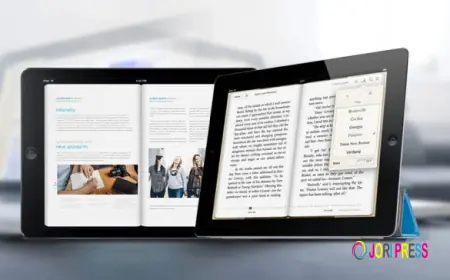Will Guru IPTV Replace DTH & Cable TV by 2030?
Will Guru IPTV Replace DTH & Cable TV by 2030?

The world of television is changing rapidly. Traditional DTH (Direct-to-Home) and cable TV services, which once dominated the market, are increasingly being challenged by internet-based solutions like Guru IPTV. Unlike satellite or cable, IPTV delivers thousands of channels directly through the internet, including live TV, movies, sports, and regional programming in languages like Hindi, Tamil, Telugu, and Punjabi. For Indian households living abroad, the appeal is clear: HD streaming, affordability, multi-device access, and a massive content library without the hassle of satellite dishes or expensive cable subscriptions. By 2030, experts predict that internet-based platforms like Guru IPTV may dominate the entertainment landscape, offering viewers more flexibility, better quality, and convenience than traditional TV services ever could.
Advantages of Guru IPTV Over DTH & Cable
Guru IPTV provides several advantages over traditional DTH and cable systems. First, it offers a broader channel lineup, often exceeding 10,000 channels, including live sports, movies, and regional programming. HD and even 4K streaming ensures superior picture quality, while optimized servers minimize buffering issues common with satellite and cable TV. Multi-device support allows families to watch different content simultaneously on Smart TVs, Firestick, Android boxes, and smartphones. Subscription plans are affordable, with no hidden fees, installation charges, or long-term contracts, unlike cable or satellite providers. This flexibility, combined with ease of access and constant updates, makes Guru IPTV a more modern and user-centric solution. These factors suggest that IPTV is positioned to gradually replace DTH and cable for viewers seeking variety, affordability, and convenience.
Consumer Trends Favoring IPTV
Consumer habits are shifting toward on-demand, internet-based entertainment. Younger audiences, in particular, prefer streaming platforms that allow flexibility to watch what they want, when they want. Traditional cable restricts viewing to fixed schedules and limits channel options. Guru IPTV caters to these trends with a massive library of live and on-demand content across multiple languages. Multi-device access means viewers can watch on TVs, smartphones, or tablets, fitting into modern lifestyles where mobility and convenience are key. Additionally, Indian households abroad seek content from home, including regional channels, sports, and Bollywood movies, which IPTV services like Guru provide more efficiently than DTH or cable. By 2030, these consumer preferences suggest that IPTV will continue to grow, offering a tailored, user-friendly experience that traditional services cannot match.
Technological Advancements Boost IPTV
The rise of faster internet, cloud streaming, and smart devices is accelerating the adoption of IPTV services like Guru IPTV. With fiber-optic networks and 5G connectivity, HD and 4K streaming is now reliable even during peak usage times. Cloud-based platforms allow for automatic updates, expanding channel libraries, and on-demand content without requiring physical installations. Traditional DTH and cable lack this flexibility, often requiring technicians for updates or troubleshooting. Additionally, advanced IPTV interfaces allow easy navigation, personalized recommendations, and simultaneous multi-device streaming. By 2030, as technology continues to improve and household internet speeds increase, IPTV will offer an experience that surpasses cable or satellite, combining quality, convenience, and variety in a single platform. This positions Guru IPTV as a key contender for the future of home entertainment.
Challenges and Limitations
Despite its advantages, IPTV faces challenges that may slow complete replacement of DTH and cable. Internet dependency means streaming can be affected by outages or slow connections, particularly in rural or remote areas. Legal and licensing issues can also affect availability of certain channels in some regions. Additionally, some viewers still prefer the simplicity of traditional satellite boxes or cable plans that do not require app installations or tech knowledge. However, companies like Guru IPTV continue to address these challenges with user-friendly apps, customer support, and optimized servers. While these limitations exist, they are gradually being mitigated, suggesting that the overall trend toward IPTV dominance will continue, especially in urban and suburban areas with reliable internet access.
IPTV’s Future vs. Traditional TV
By 2030, it is likely that Guru IPTV and similar services will dominate the entertainment landscape, especially for tech-savvy viewers and households abroad seeking Indian content. Its advantages in affordability, HD streaming, multi-device access, and a vast channel library give it a clear edge over DTH and cable. Consumer trends and technological advancements favor internet-based platforms, while traditional TV struggles to compete with flexibility and convenience. Although challenges remain, continued innovation and growing adoption suggest that IPTV will become the primary choice for modern households. For Indian families abroad and globally, Guru IPTV represents the future of television—smarter, faster, and more versatile than traditional DTH or cable services.
What's Your Reaction?
 Like
0
Like
0
 Dislike
0
Dislike
0
 Love
0
Love
0
 Funny
0
Funny
0
 Angry
0
Angry
0
 Sad
0
Sad
0
 Wow
0
Wow
0


















































